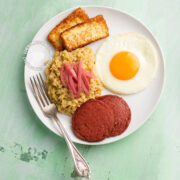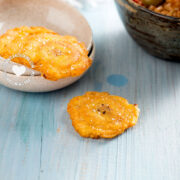Plantains are a staple in any Caribbean kitchen, and the delicious mofongo (garlic flavored fried mashed plantain with pork cracklings) is one of our star plantain recipes. An amazingly flavorful dish that, while rarely made at home, you can now enjoy any time.
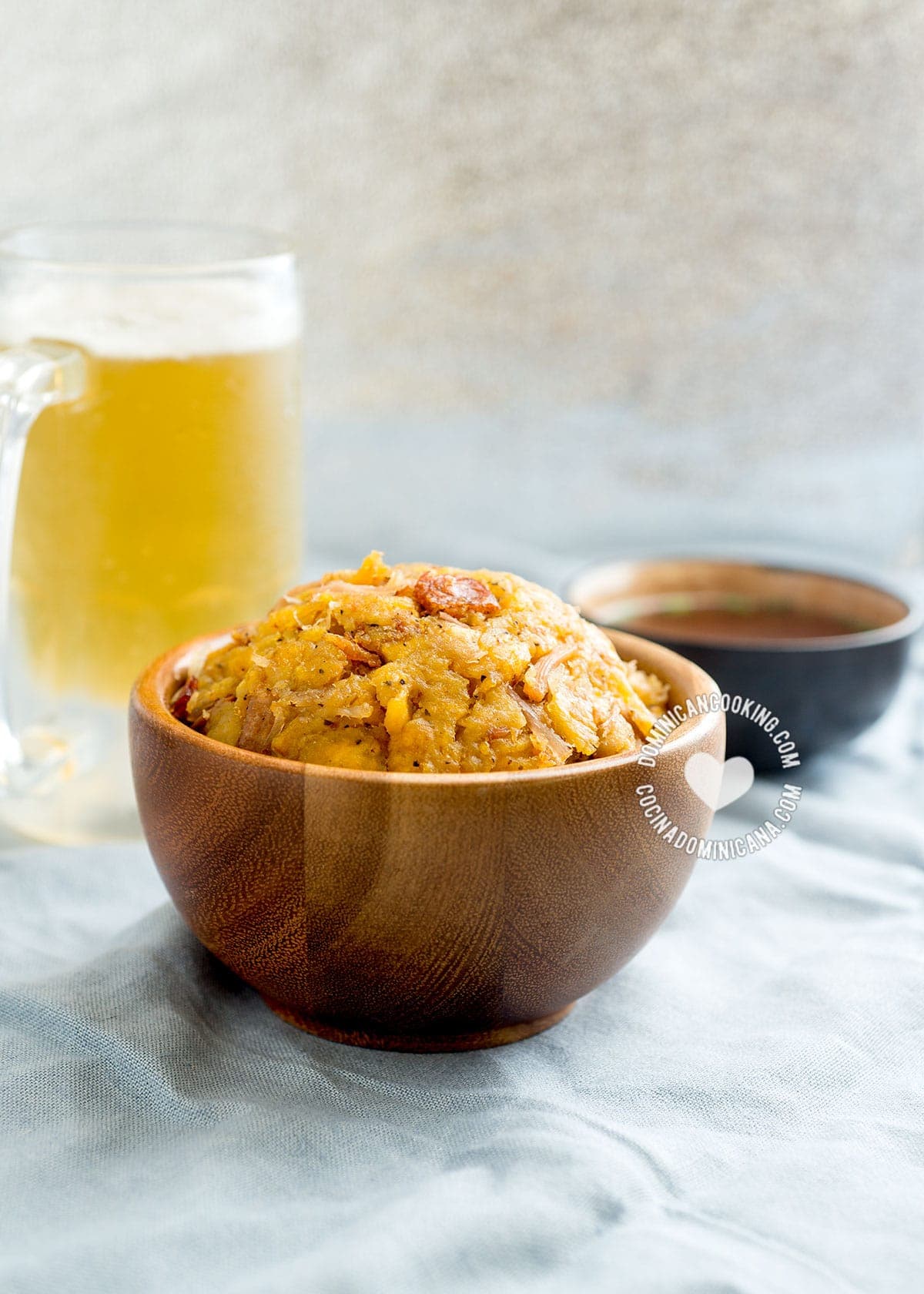
Why we ❤️ it
Mofongo is a dish with a special place in our hearts and stomachs and is much loved by Dominicans. Mofongo, tostones and mangú are probably the favorite plantain dishes in the Dominican Republic.
If I had to define mofongo in a word, that would probably be umami (savory), there are so many strong flavors in this plantain dish, but they somehow manage to work together. It truly is an unforgettable dish.
Where is it from?
The version we know best actually originates in the neighboring island of Puerto Rico. While there is also a Dominican mofongo, it was traditionally made with plantains roasted on coal (read history and culture), as opposed to fried plantains. This was, therefore, different from the Puerto Rican mofongo we've now come to love.
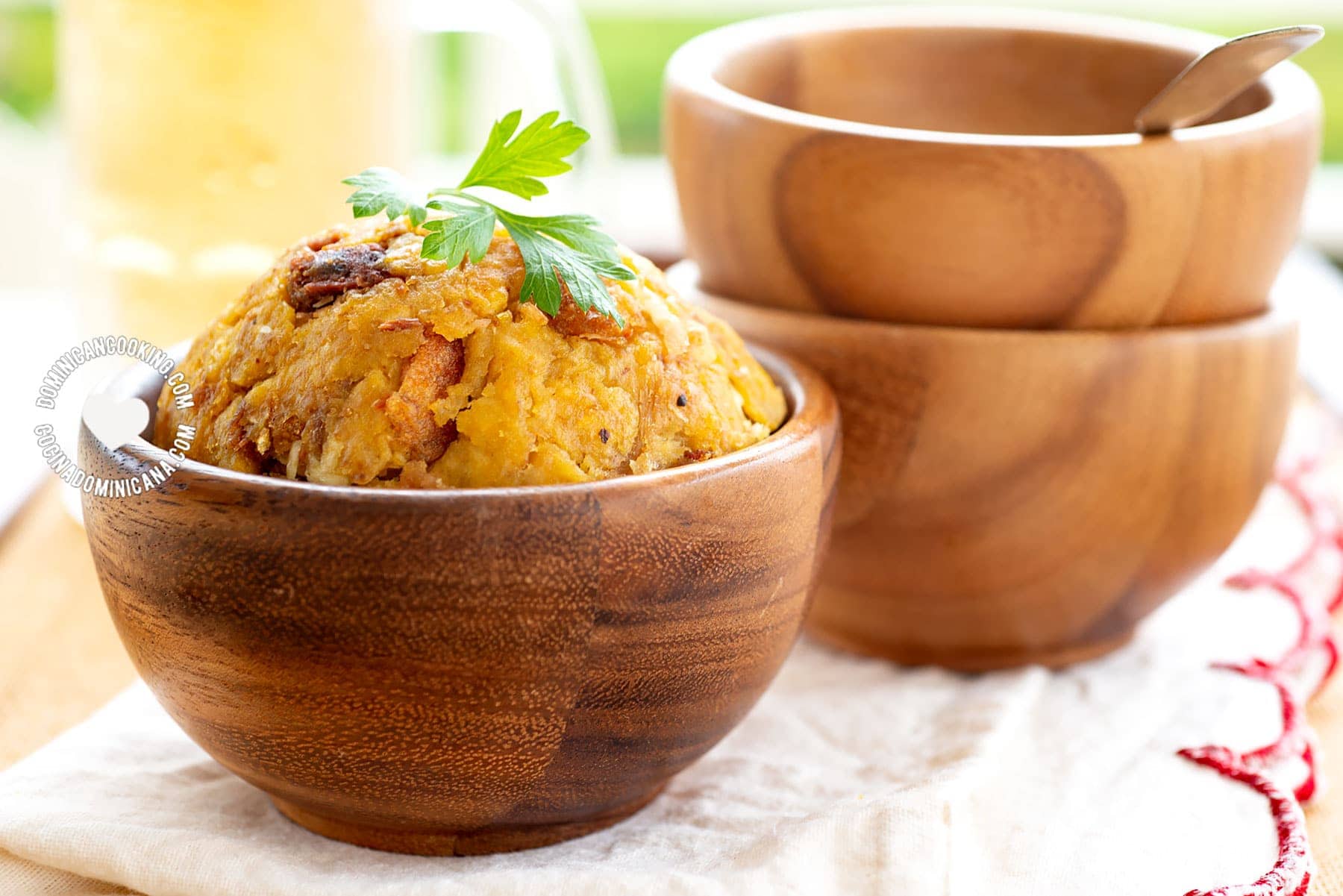
What is mofongo?
Mofongo is a savory dish consisting of fried green plantains, which are crushed then mixed with fresh garlic paste and mixed with pork cracklings. It is then shaped into a ball and served in a large pilón (the mortar bit of the traditional wooden mortar and pestle).
Mofongo – never, ever to be confused with mondongo! – is made with chicharrón (fried pork rind), but other variations exist (see further down). It is served alongside a bowl of broth, to moisten the mofongo, and enhance its flavors.
How to serve
The traditional Mofongo can be eaten for lunch or dinner, as the main dish, or as a side dish. Mofongo is also a popular snack for late-night revelers looking to start or end the night with a hearty dish. It can be served with just chicharrón mixed in, or alongside meat or shrimp.
The recipe include a beef broth, but you can also serve it with our chicken broth, or for a vegan mofongo, leave out the chicharrones and serve with our vegetable stock.
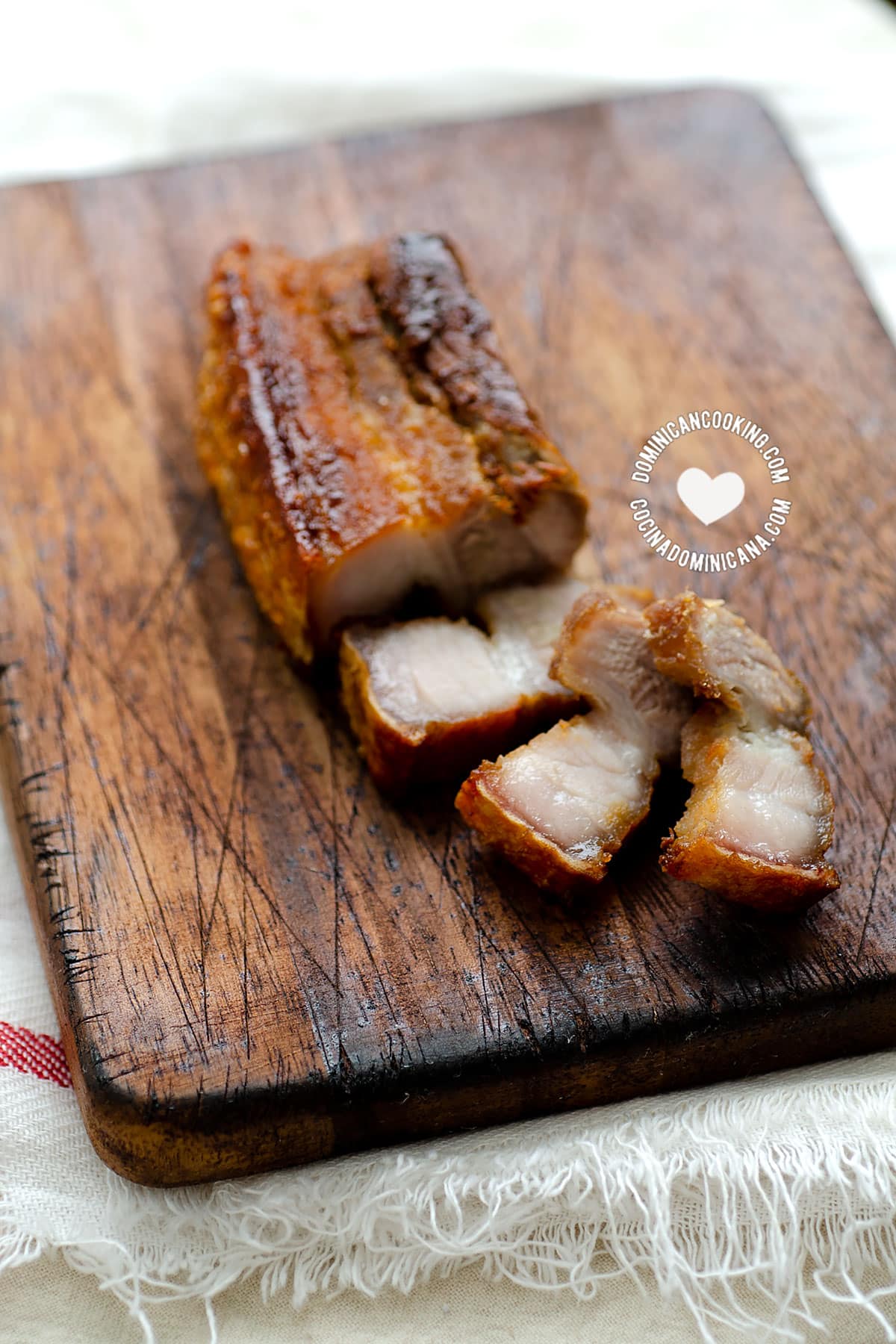
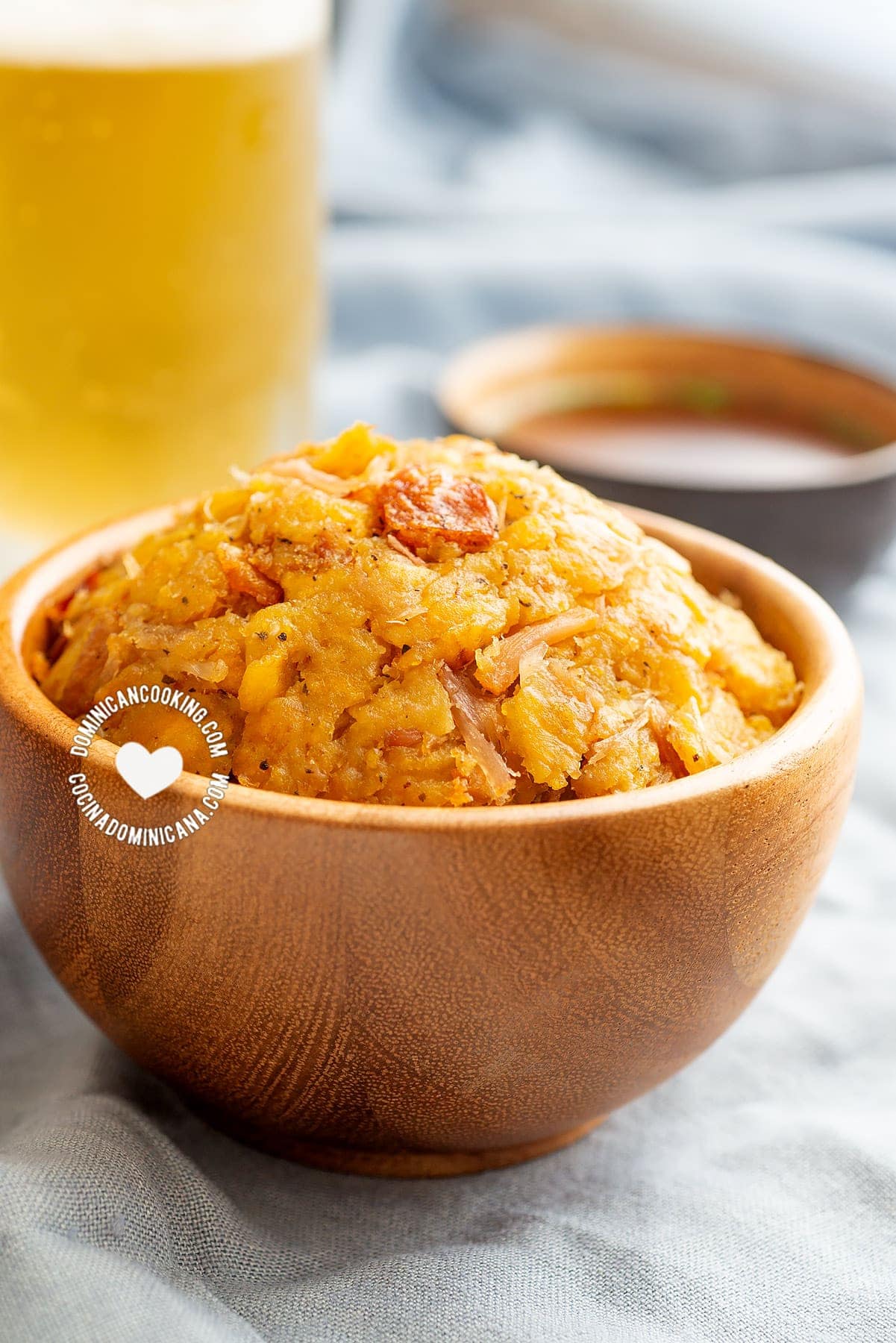
Chicharrón for mofongo
If you want to make pork cracklings from scratch, follow the directions and video in this recipe.
More mofongo recipes
These are other amazing mofongo recipes to try.
About this recipe
There are very many classic mofongo recipes and many a Dominican restaurant that specializes in this popular plantain mash. This is my favorite classic mofongo.
Don't forget to see our tutorial on how to peel plantains.
This recipe yields 6 servings.

Recipe
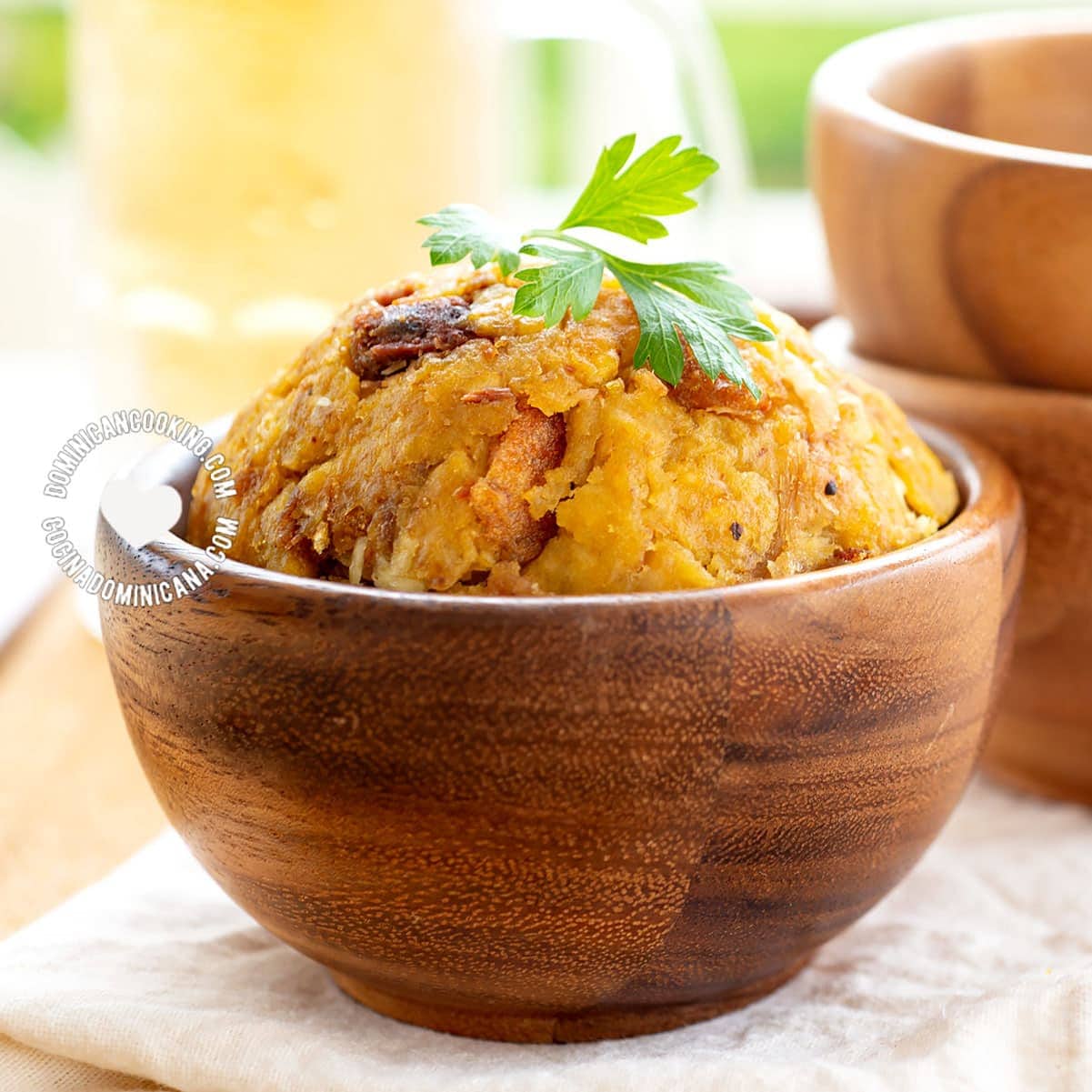
Mofongo [Recipe + Video] (Garlic-Flavored Mashed Fried Plantains)
Ingredients
For the sauce
- 2 tablespoons olive oil
- 1 pound beef bones, [0.45 kg] any type would do
- 1 tablespoon mashed garlic, cloves
- 1 red onion, halved
- 1 sprig cilantro
- 1 sprig of recao/cilantro ancho/culantro, optional
- ¼ teaspoon oregano (dry, ground)
- ¾ teaspoon salt, (or more, to taste)
For the mofongo
- 1 cup oil for frying, (vegetable oil)
- 5 plantain (green, unripe), peeled (how to), cut into ¾" [2 cm] slices
- 1 pound pork cracklings, (fried pork skin) cut into 1″ [2.5 cm] pieces (see notes!)
- 2 tablespoon garlic, mashed (about 4 garlic cloves)
- 1½ teaspoon salt, (or more, to taste)
Instructions
How to make the broth
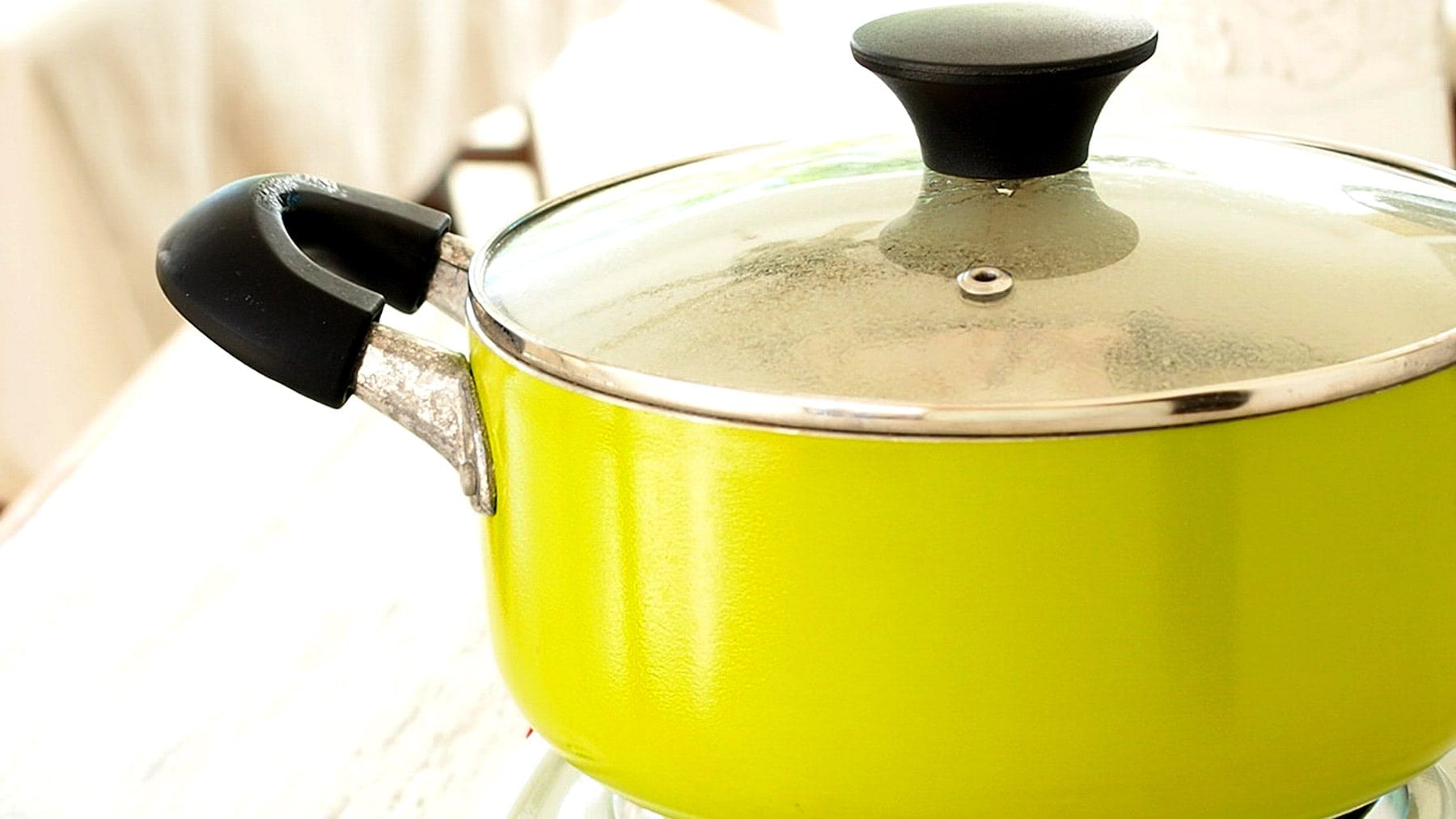 In a large saucepan heat the olive oil over medium heat. Brown the beef being careful that it does not burn. Add the garlic and onion and stir. Pour in 4 cups of water, and add cilantro, cilantro ancho, and oregano.Boil for an hour over low heat, topping off the water every once in a while to maintain the same level.Season with salt to taste. Sieve and remove the solids.
In a large saucepan heat the olive oil over medium heat. Brown the beef being careful that it does not burn. Add the garlic and onion and stir. Pour in 4 cups of water, and add cilantro, cilantro ancho, and oregano.Boil for an hour over low heat, topping off the water every once in a while to maintain the same level.Season with salt to taste. Sieve and remove the solids.
How to make mofongo
 Heat oil in a small pot or saucepan over medium heat and fry the plantain slices till golden brown all over (3-5 mins). Remove from the oil and place on a paper towel.
Heat oil in a small pot or saucepan over medium heat and fry the plantain slices till golden brown all over (3-5 mins). Remove from the oil and place on a paper towel.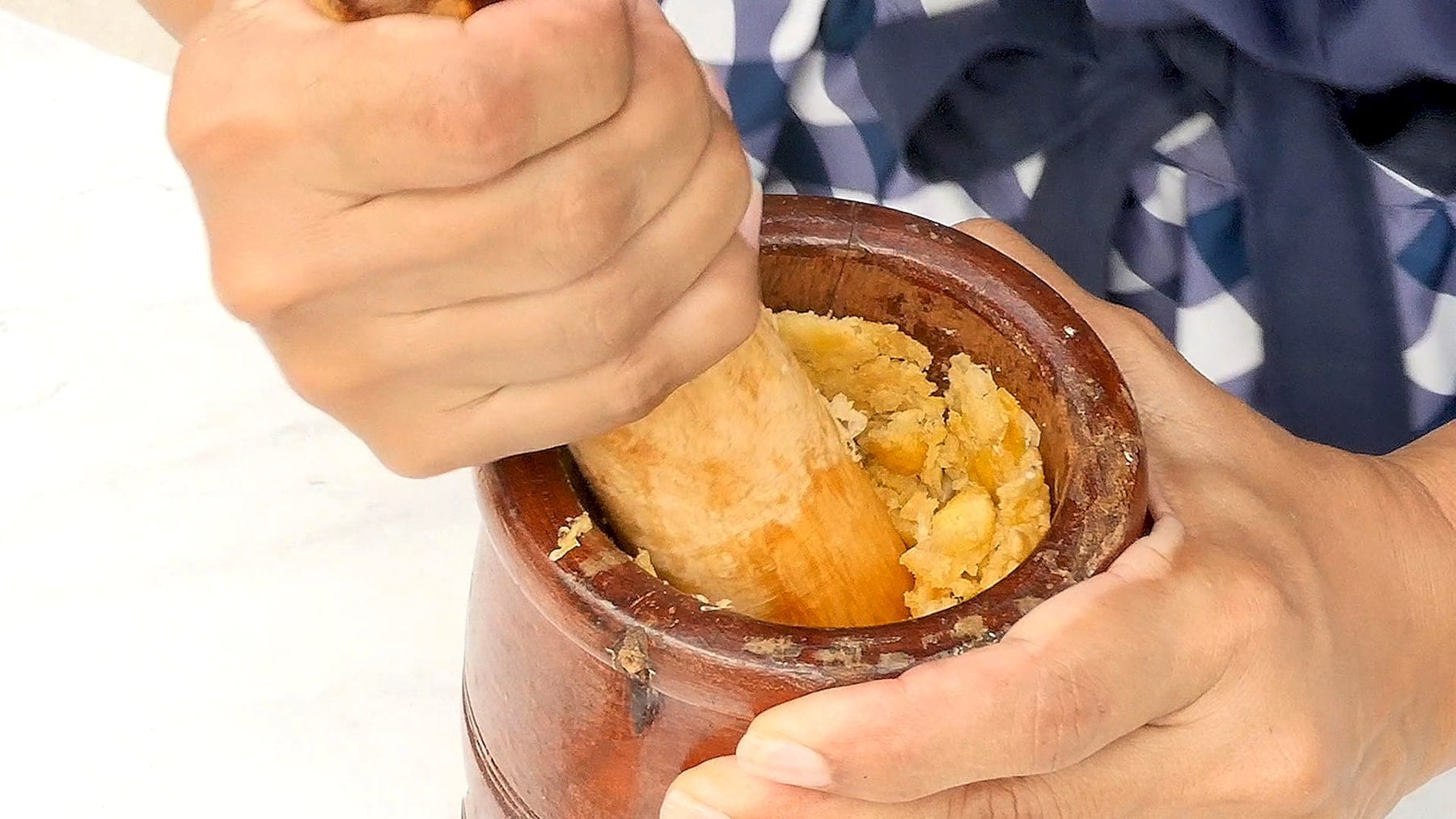 Using a pilón (large mortar and pestle) or potato masher, crush the garlic and salt, add in plantains and mash, then add cracklings and crush to combine with the plantains (You might have to divide the ingredients and do it in 6 batches to fit in your pilón). It will have a dense consistency and will more or less form a ball.
Using a pilón (large mortar and pestle) or potato masher, crush the garlic and salt, add in plantains and mash, then add cracklings and crush to combine with the plantains (You might have to divide the ingredients and do it in 6 batches to fit in your pilón). It will have a dense consistency and will more or less form a ball.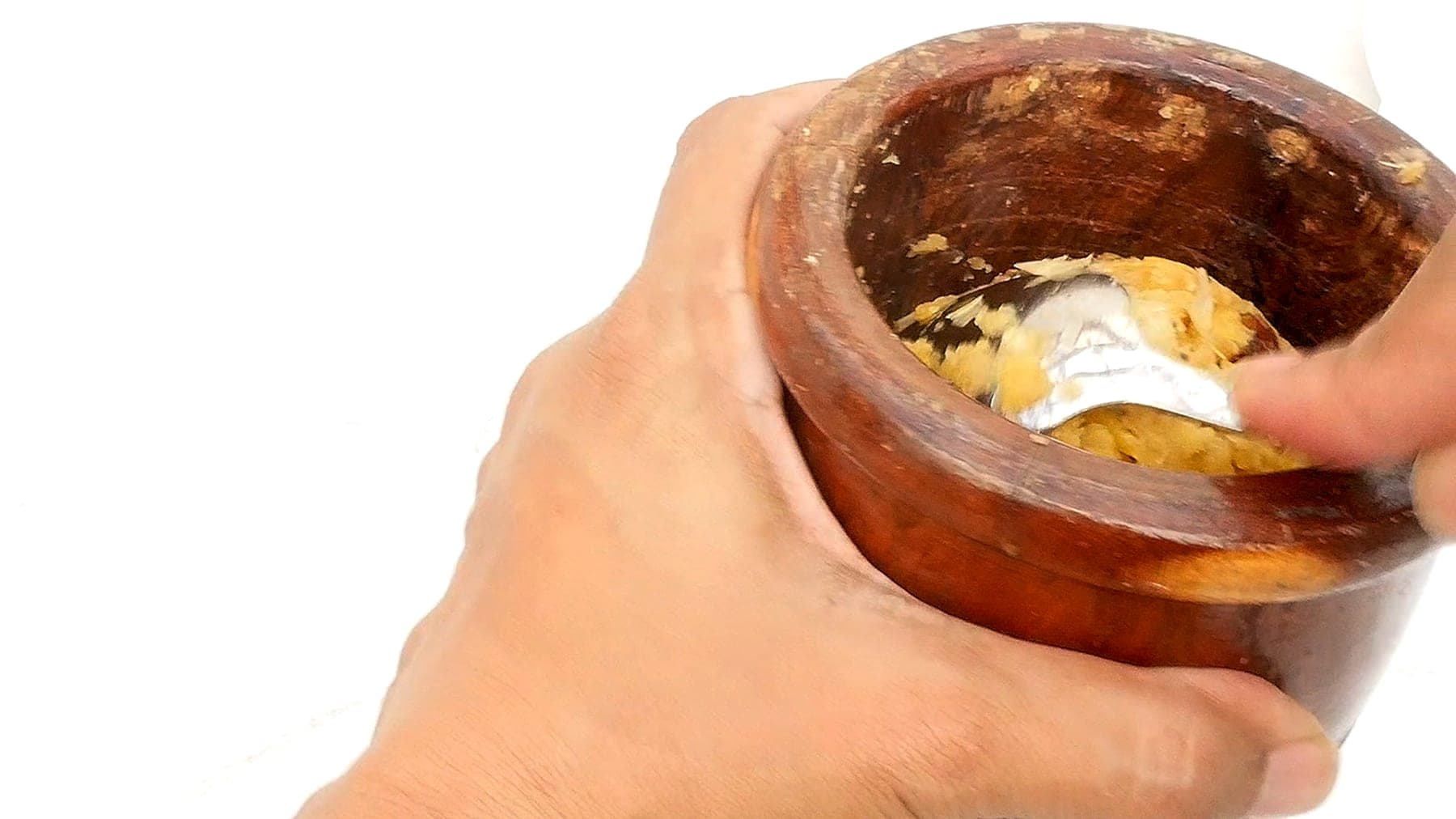 Shape the mixture into 6 balls and place each in a small bowl.
Shape the mixture into 6 balls and place each in a small bowl.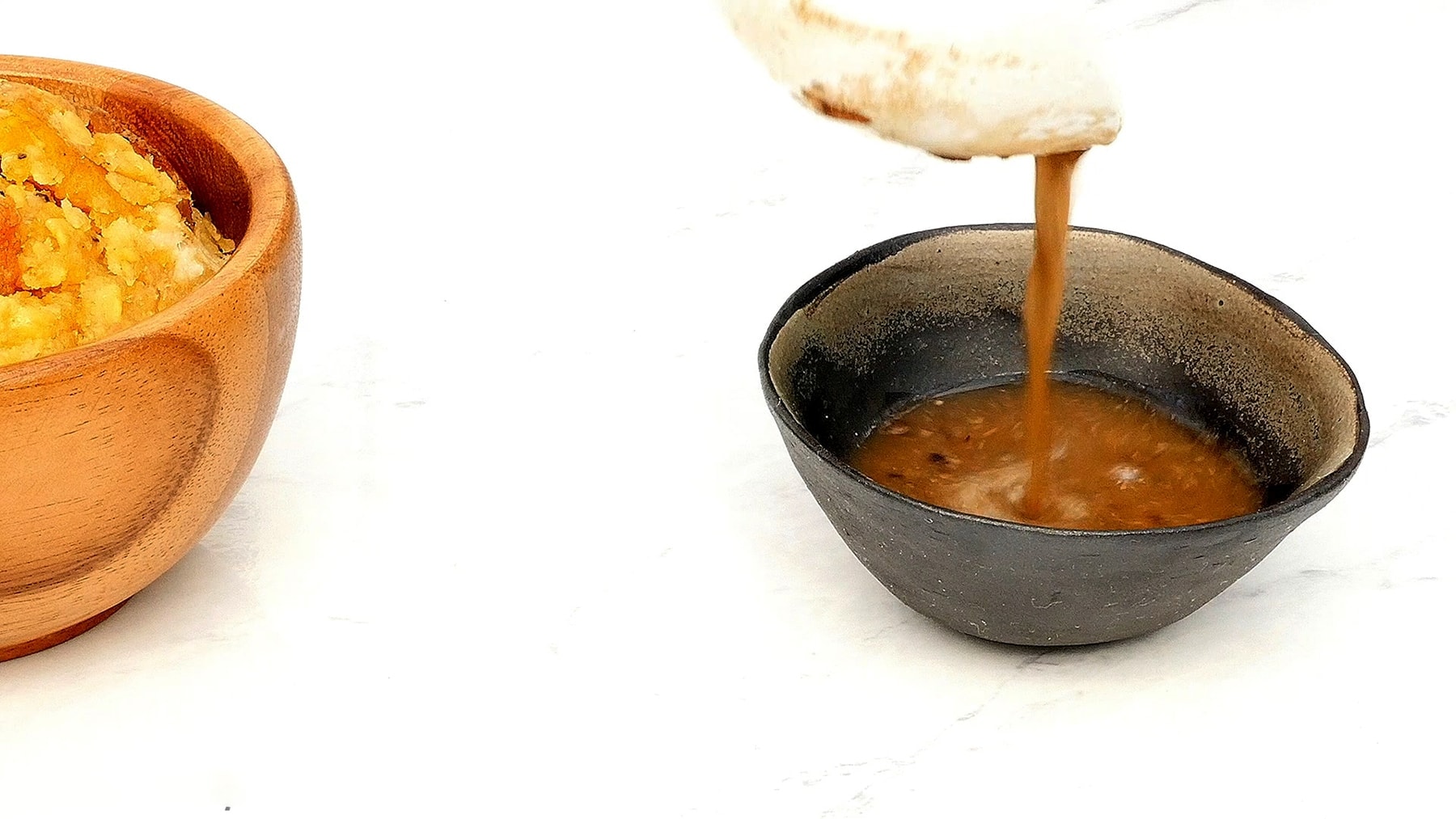 Place the balls into the serving plates, and garnish with the broth, that you'll use to pour over and moisten the mofongo balls.
Place the balls into the serving plates, and garnish with the broth, that you'll use to pour over and moisten the mofongo balls.
Video
Nutrition
Nutritional information is calculated automatically based on ingredients listed. Please consult your doctor if you need precise nutritional information.
What are plantains?
Plantains are starchy vegetables from the genus musa, same as bananas. They originate in Southeast Asia and are a stable of Spanish Caribbean cuisine, and the main ingredient in Mofongo. You can learn more about how to cook it, and how to peel it.
History and culture
So much of Puerto Rican cuisine is similar to Dominican food, that it’s difficult to say who invented what, owing to a common history (that only diverged during the 19th century) and during which there was constant movement between the two islands.
There are some differences in our cuisine, like in the spelling. What we know as guandules (pigeon peas) in the DR is spelled gandules in PR. Similar or identical dishes sometimes have different names. And some Puerto Rican dishes share a name but little else with some Dominican dishes.
It isn't surprising at all then that two similar dishes with the same name exist in both countries, or that a popular Puerto Rican dish has become part a favorite here, after all both countries share the same influences from African cuisine. Plantains arrived for the first time to the Caribbean islands shortly after the first enslaved Africans arrived in Santo Domingo, and despite the dominant Spanish influence in our cuisines, our African ancestors left a very strong and lasting imprint in our cuisine, much more so than the Taino, the indigenous people who inhabited most of the Caribbean before the Spanish conquest.
So this is my final answer: As far I can tell, fried mofongo comes from Puerto Rico, and the traditional Dominican one is made with roasted plantains (sources), although nowadays fried mofongo is the most popular and common in our country and we have adopted it with enthusiasm, so thanks to Puerto Rico for that.
You can read more about Dominican mofongo here.
FAQs
If you ever have leftover mofongo that you want to reheat, the best way to do so is to heat a non-stick pan over medium heat and pan-fry the mofongo until it is heated through.
The calories in mofongo will vary depending on the recipe, this recipe contains 659 calories per serving. Bear in mind that this is an approximation and calculated automatically.
I would not advice that. The traditional Puerto Rican dish is made by mashing the plantains with a mortar and pestle, a bit labor intensive, but it guarantees the best result.
References
(1) Amanda Ornes de Perelló, Cocina Criolla. Sto. Dgo.: Ed. del Caribe, 1962.
"Mafongo [sic] [...] Se asan plátanos y se majn [sic] y se mezclan con chicharrón molido"
(1) Ligia de Bornia. Comidas Típicas Dominicanas. Sto. Dgo: Arte y Cine, 1965
"Mofongo [...] Maje los plátanos asados y los chicharrones en el mismo pilón"
Published December 21, 2003, and last revised


